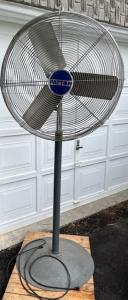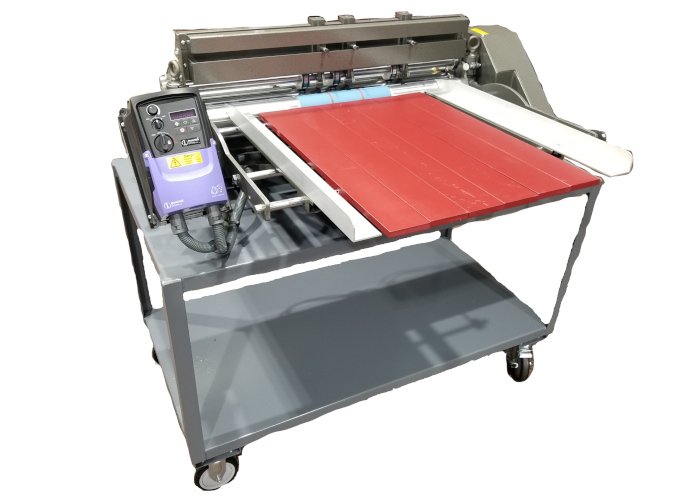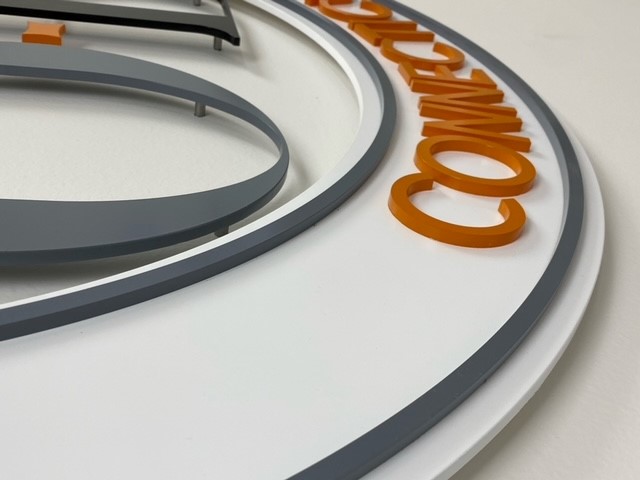Installation evolution: Tools and tech transforming the trade

Sign installation has always been a craft built on precision, skill, and hands-on problem-solving. In recent years, installers across Canada have seen the landscape shift dramatically. The trade has evolved—making jobs faster, safer, and more precise. We asked installers and team leaders to reflect on the innovations, tools, or technologies that have changed the installation game for them. Their answers reveal a mix of traditional know-how and modern ingenuity that defines today’s installation work.
Precision tools make the difference
For Kevin, an installer at Multigraphics Ltd., it’s all about precision. “Laser levels have changed the installation game for us,” he says. “They help ensure things are truly level with ceilings, floors, or walls, which is rarely the same each time. We write down our ‘recipes’ for slip solutions, always use a fresh blade to avoid headaches, and never rush the job—it’s not worth it. These tools and habits make our work more precise, efficient, and less stressful than a few years ago.”
Noah H. from Steel Art Signs echoes the value of laser levels, adding the efficiency of digital layout tools. “As an installer, my biggest game-changer was when we moved to laser levels and digital layout tools. What used to take hours with tape measures and chalk lines now takes minutes, and the precision is unbeatable. Pair that with modern lifts, and installs today are faster, safer, and straighter than ever.” For many installers, these tools are no longer optional; they’re essential for maintaining quality and meeting client expectations.
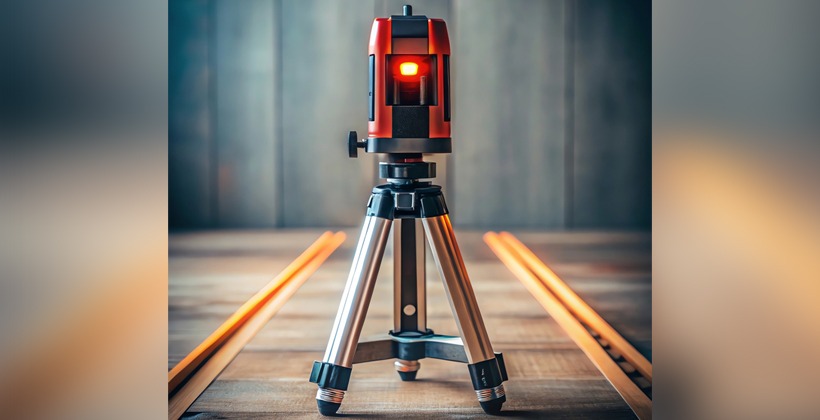
Communication at your fingertips
Other innovations go beyond the physical tools of the trade. Communication technology has become a surprisingly powerful game-changer. Nicole Van Boxtel, managing director at Select Signs, points to WhatsApp as a key development. “There was Skype way back when, but in the last few years, installers have been using WhatsApp for video calls. Issues arise on site, and a phone call or text isn’t enough. Being able to talk to the installer face-to-face and have them show you what is going on makes a huge difference and eliminates errors and guesses.” The immediacy of video communication on a phone allows teams to resolve problems in real time, cutting down on costly mistakes and reducing frustration for installers and clients alike.
Digital boards and expanding skill sets
Technology has also expanded the scope of skills required in the industry. Miguel Dasilva, installation and operations lead with Media Resources in Alberta, notes the rise of digital boards as a transformational shift. “Installing channel letters or static cabinets was straightforward, mostly mechanical work. With digital, the install side has become a whole new world. It’s not just lifting and mounting anymore—it’s wiring, data connections, ventilation, and absolute precision when laying out the position of the board.”

Dasilva describes how today’s installers often straddle multiple trades: electricians, IT specialists, crane operators, riggers, and carpenters all in one job. “In a way, our trade has started to overlap with others. Some days it feels like we’re electricians, ensuring power and control systems are wired correctly. Other days, it’s more like IT work, with networking and software. At the same time, we’re still crane operators, riggers, truckers, welders, and carpenters, making sure the sign looks perfect once it’s in place.”
He adds, “Compared to a few years ago, installs today require much more planning and a wider skill set. But that’s what makes it exciting. When a digital board finally lights up and runs perfectly, or we complete a rollout for a national account, it feels like we’ve pulled together the best parts of multiple trades into one finished product.”
The value of classic tools
Alongside these digital transformations, the right traditional tools remain critical in signage and digital printing. Mackenzie Schultz, installation manager at Sleek Signs, emphasizes the squeegee. “One of the tools I simply could not do without is the squeegee. We use our standard 3M gold squeegee daily, always enhanced with monkey strips to provide optimal protection for both the surface and the vinyl we are installing. However, it’s crucial for us to have access to a wide range of squeegees to efficiently complete various jobs. From large floor squeegees for extensive applications to specialized wrap sticks for intricate detailing, each type serves a unique purpose and contributes significantly to making our installations smoother and more precise.” Even in a high-tech world, tactile tools are indispensable.
Cloud-based workflows: Smarter installs
Cloud-based technologies are another area reshaping fieldwork. Kenn Leech, senior sign technician and health, safety, and environment (HSE) representative at Tops Lighting Sign Installation & Services in Ottawa, Ont., notes how mobile apps and cloud workflows are changing operations. “Mobile apps now handle work orders, inventory, and job updates directly from the field, cutting down on paperwork and miscommunication. Augmented Reality (AR) measuring tools and mock-up apps let crews capture exact dimensions and show clients how a sign will look before installation. Colour match apps ensure precise brand consistency on-site, while digital checklists and estimating tools streamline safety and quoting. Cloud-based project management connects the office, installers, and clients in real time. Work orders, drawings, and site details are shared instantly, and field photos update progress on the spot.”
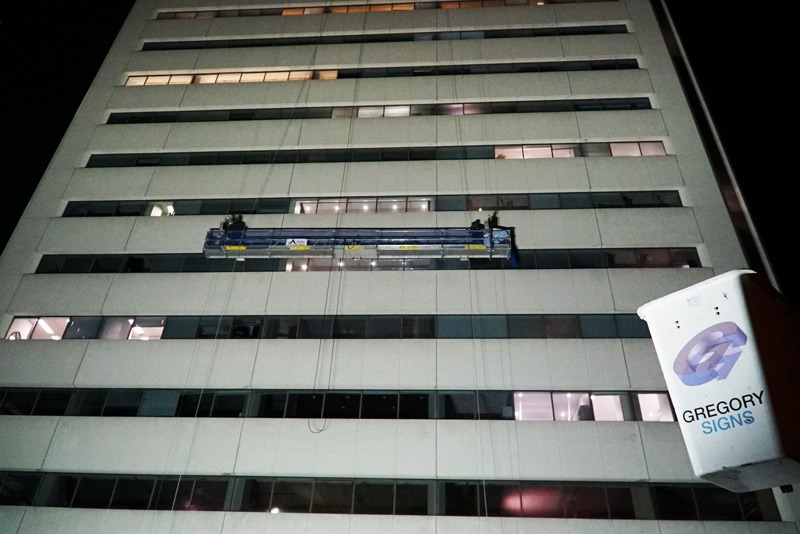
Leech explains that these systems not only save time but also improve safety and client confidence, allowing installers to focus on delivering quality results.
A trade in transition
These sign professionals collectively paint a picture of an industry in transition. Precision tools, communication apps, digital boards, and cloud technology have each contributed to making installation work faster, safer, and more sophisticated. But alongside these innovations, core practices—like careful planning, proper squeegee selection, and measured installation techniques—remain as important as ever. “It’s not just about speed; it’s about precision and reducing wear and tear on the crew. Instead of spending an hour just setting up access, we can focus directly on the installation itself. That shift has changed how we plan jobs, how our team works together, and ultimately the level of service we can provide to clients,” Dasilva concludes.
For installers today, the evolution of the trade is both a challenge and a reward. They must adapt to new technology, broaden their skill sets, and embrace tools that simplify complex tasks. The payoff is clear: Safer jobs, smoother installations, and the satisfaction of seeing a sign come to life, perfectly executed, every time.

